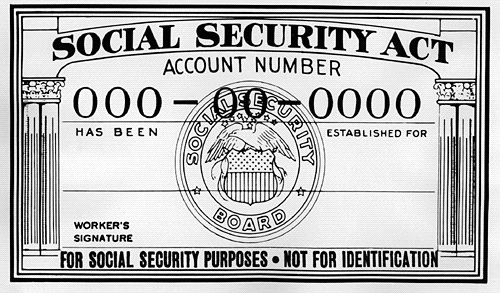
This is a bit of a follow-up to the GAO report I wrote about over the weekend.
You all know about the Jane Plan, right? Change Social Security into a flat universal benefit meant to provide a basic living standard, and then create universal provident fund-like savings for the income tier above this.
Yes, I’ve been flogging this idea for a whole, and can’t get any takers. And I get quite irritated with people who speak as if we can never, ever, change the benefit design of Social Security, as if FDR and Congress-at-the-time were so unfathomably wise that they crafted a formula which can never, ever be improved upon. (Fun fact: the UK adopted a variant on the Jane Plan, so it’s possible.)
But my beef with Social Security isn’t about its sustainability — that’s a matter of tax rates — but with its transparency, or lack thereof. (Well, OK, it’s also about sustainability, but that’s for another blog post.) A bland statement like “Social Security replaces about 40% of pay for the average earner” tells you incredibly little about your own likely future Social Security benefit relative to your income, due to the progressive nature* of the benefit formula, the 35 year averaging, the spouse’s benefits, and so on — and that’s not even mentioning the question of what will happen to benefits when the Trust Fund is exhausted. (Cynical prediction: Congess will do nothing, and then, as a last-minute fix, pass a law that says that any excess funds required to pay benefits will come out of general revenues.) Sure, you can go to a calculator, and make predictions about future income, but that requires an extra level of financial acumen.
(* Reminder: Social Security pays different benefits at different levels of average indexed pay. Up to the first “bendpoint” Social Security pays 90% of pay; then the percentage drops to 35% to the next bendpoint, and 15% afterwards until you hit the maximum compensation.)
And this formula makes sense under certain circumstances.
A typical traditional DB pension formula used to look something like this: 2% of final average pay per year of service, less a proportionate amount of one’s Social Security benefit, with adjustments to ensure that lower-wage workers got a “fair” amount of benefit. Because the benefit was paid out at retirement, based on actual Social Security benefits, and in the meantime, estimated Social Security benefits only mattered to the actuaries who calculated funding contributions, the non-transparency of Social Security didn’t really matter, certainly not to the workers themselves.
And the formula makes sense if you assume that, in the 1930s, there was formalized retirement planning, per se, and that individual saving, for retirement or for a rainy day, happened more-or-less organically. If you had more money, you were also more likely to save more, because saving was more “natural” rather than being a product of spreadsheets and modellers and target amounts.
But in 2017, when workers need to figure out how much to save, and choose a contribution rate in their 401(k), this progressive formula just doesn’t make as much sense, because it makes the whole thing much more of a mystery. The whole concept of the “nudge” is big right now, what with Richard Thaler winning the Nobel-ish Prize, and the progressivity of Social Security is a sort of anti-nudge. When taken together with all the other ways that retirement income is unpredictable, it leads to a “throw up your hands” attitude and makes it harder to find that path towards appropriate amounts of 401(k) savings.
Having said all that, I have a reader question: what percent of your income do you think that Social Security will provide you when you retire? And how much more than that do you think you need, or want to have? And what sort of living standard, relative to your present circumstances, do you hope to have when you retire? (And, yes, this is also a complicated question because the hoped-for travel does, eventually, turn into watching TV all day, for plenty of us, whether we plan it that way or not, and even enjoyment of cooking or eating out fades for those whose sense of smell diminishes as they age.)
Image: https://commons.wikimedia.org/wiki/File:Social_security_card.gif; originally produced by the Social Security Administration and in the public domain












